| 1 | Rim rock crown snake |
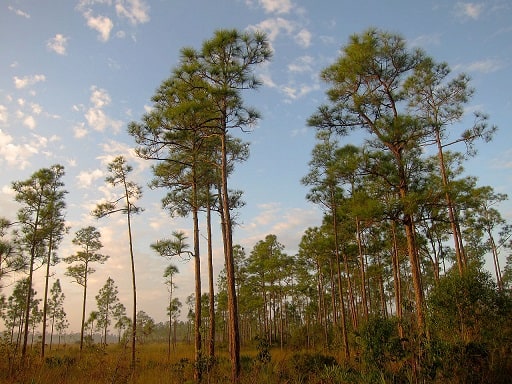
This tiny snake lives only in Florida, and has been listed as endangered by the state government since 1975 and IUCN since 2007. Rim rock crowned snakes are related to the more common southeastern crown snake and reach a record of 29cm. Their body is a fleshy red with no patterns, and the sole variation being a stark black head. They look more like worms than snake, and their diet include earthworms and centipedes.
Rim rock crowned snakes are found solely in Miami-Dade County and Monroe county (Florida keys). The problem is their ultra specific habitats: tropical hardwood, hammocks and pine rocklands, with a shallow sandy soil covering a limestone base. The precise ecosystems are found only in sunny southern Florida, and since the species’ discovery, 98% of Miami’s Rock Ridge pinelands have been developed, for housing or commerce.
Likewise, 50% of the hardwood hammocks have been destroyed. The exact spot where Tantilla oolitica was first discovered in 1966 was converted into a supermarket just months later. The saviour is that they’re still common where they cling on. Nobody sees them anyway, due to their shy personality, and attraction to shelter beneath rocks and fallen leaves.
| 2 | Giant garter snake |
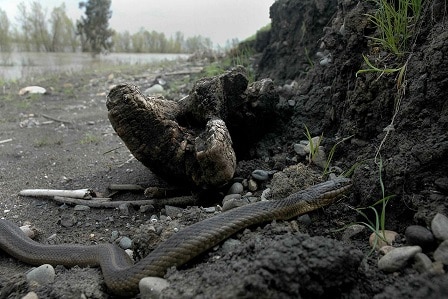
The largest of the neverending garter snake family, reaching 94-165cm versus an average of 57cm for the common garter snake. But the flipside is that they’re one of the rarest species. Giant garter snakes have only ever inhabited California, particularly tule marshes along the Sacramento and San Joaquin Valleys. This is a snake of wetlands, and by the mid-twentieth century, development had reduced their range by 50%.
Giant garter snakes featured on the very first California Endangered Species Act in 1970. Today, they’ve been eliminated from 98% of their San Joaquin range, but are clinging on much better in Sacramento, partly because of the booming rice fields it contains. These fields create an artificial system of waterways, which they slither along like tunnels to hunt prey, which mostly consists of frogs, tadpoles and fish.
Giant garter snakes rarely stray more than 4 meters from water, which makes it extremely hard to colonise new areas. Another factor is that pesticide run off is killing their prey, such as native red-legged frogs. Giant garter snakes aren’t critically endangered, but if you want to meet one, you’ll have to go on a pilgrimage to a very narrow corner of California.
| 3 | Louisiana pinesnake |
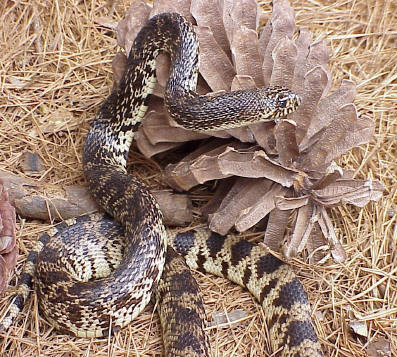
The Louisiana pinesnake is widely accepted as America’s rarest and most endangered. It’s a long snake at 130cm, so there’s no chance that it’s escaping scientists’ radars simply by being tiny.
The Louisiana pinesnake lives in two states, Louisiana and Texas, and only 9 confirmed counties across both. Their sole habitat is longleaf pine, which is steadily shrinking as more economically efficient loblolly plantations spring up for harvesting. Longleaf pine is the only forest with the proper soil type for the Lousiana pinesnake’s digging habits.
Most importantly, the Baird’s pocket gopher also lives in longleaf pine, and the Louisiana pinesnake has evolved to shelter in its burrows, and eat them as food. Without the gophers, this rare snake tends to disappear. There’s a bevy of conspiring factors, including too much control of wildfires (for once). Longleaf pine is naturally designed to burn at regular intervals to kill off mid story vegetation and keep the soil below just right, but farmers are controlling these fires to benefit their own crops.
Today, Texas has only 7% of its 1935 longleaf pine. But a collective effort is underway, and in 2020, a vast deal with the Weyhauser logging company was announced to protect 667,000 acres of land, all to protect America’s rarest snake.
| 4 | Arizona black rattlesnake |
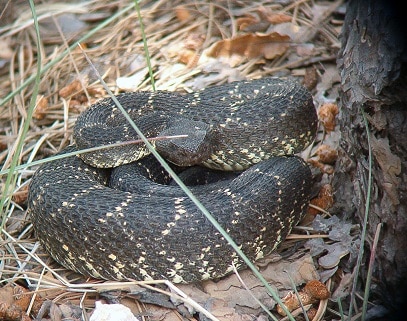
Of 33 rattlesnake species in North Amerca, the Arizona black rattlesnake has the distinction of only living at high altitudes. It favours cool, moist forests in places like Tonto and Saguaro National Parks, in sky islands far above normal civilisation. Its hotspots include the Hualapai Mountains of Arizona, the state’s highest peaks, plus the Pinaleno and Blue Mountains.
Crotalus cerberus was once believed to be a western rattlesnake subspecies, but separated into its own in 2009. They measure 78-122cm, and have the sneaky snake power of changing colour, caused by a flow of melanin out of scale melanophores. Arizona black rattlesnakes are rarely seen by people, not just because they mainly inhabit National Parks, but because they stay well away from footpaths and developed visitor areas.
Sadly, a 2016 study put them on an “extinction trajectory”, after analysing 118 populations. They concluded that the population was shrinking, partly caused by wildfires, which had reduced their forest habitats by 27% in 13 years across the study area (the Colorado plateau). With their aversion to low altitude, migrating and replenishing other colonies is significantly harder.
| 5 | Eastern Indigo snake |
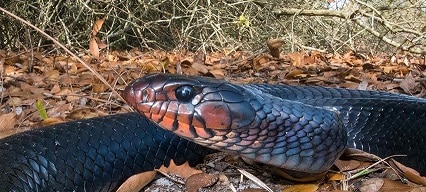
America’s longest snake at up to 2.8 meters, but that hasn’t saved it from civilisation’s encroachment. Eastern indigo snakes get 50% of their calories from other snakes, including scarlet snakes and ring-necked snakes. Their forests are probably shudder worthy among other snakes, a bogeyman zone where they never dare to go. But those woods are increasingly empty, as the federal government lists them as threatened in Florida and Georgia.
Habitat destruction was a factor (including longleaf pine again), but another killer was the decline of the gopher tortoise, whose burrows the snake takes refuge in. Rattlesnake hunters are a huge problem, as their quarry also hides in those burrows, which they try to flush out with poisonous gas, killing the innocent indigos inside.
It’s possible that thriving colonies have been overlooked, but their 2.5 meter size makes it less likely. In 2012, the Alabama government announced a statewide extinction. It’s not all bad news though: reintroductions are now underway, including 25 released in Alabama in June 2022. Eastern indigos also have more potential habitats than some: pine rocklands, dry prairie, tropical hardwood hammocks, coastal dunes and scrubby flatwoods.
| 6 | San Francisco garter snake |
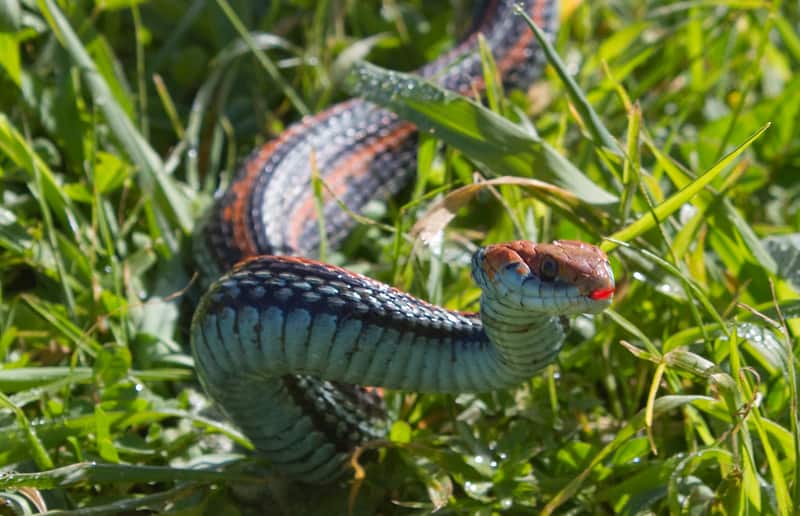
This isn’t a full species, but a subspecies of the common garter snake. Despite this, its appearance differs wildly, with colourful red and blue scales with jewel red eyes. San Francisco garter snakes exist only in San Mateo County and Santa Cruz County, and their numbers may be in the thousands. Its flashy colours are partly its undoing, as reptile collectors have long scooped them up and taken them home. This is another wetland snake, loving ponds and marshes, where it hunts for small frogs, its main foodstuff.
The more wild marshes disappear, the more the San Francisco garter snake retreats. They were listed as a federal endangered species in 1967, and state endangered since 1971.
Yet in 2021, a shining beacon of hope was lit. It turned out that California’s largest population of this snake inhabited a small parcel of land owned by San Francisco airport. Despite airports being a symbol of everything technological and industrial, they had been maintaining this random slice of undeveloped land for years, just to protect the wildlife. 1300 of the snakes lived there, as well as the endangered red-legged frog, one of their top food sources.
| 7 | Brazos Watersnake |
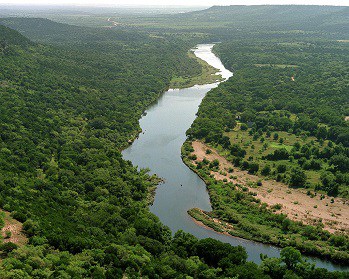
This obscure snake lives in one river in central Texas, and only the upper portions. It likes fast flowing rocky rivers with little vegetation, except for on the banks, where it likes to take shelter under weeds. As juveniles they stick to shallow rocky areas to hunt, like a kid’s paddling pool. As they grow older they can cope with deeper, more treacherous waters.
Few see Brazos’ watersnake, because a big swathe of this river occupies wild country that only hikers might venture to. As of 1987, Brazos watersnakes occupied 303km of river, along with two reservoirs: Possum Kingdom Lake and Lake Granbury. However, the population has been put under serious pressure through dam construction, and the remaining populations have become fragmented and struggled to link up.
Brazos watersnakes max out at 81cm, and are an olive-brown colour, with scales interlocking like fallen leaves. Their eyes seem to bulge out of their skulls and their bellies are an interesting colour, covered with white rows that resemble a rib cage.
| 8 | Southern hognose snake |
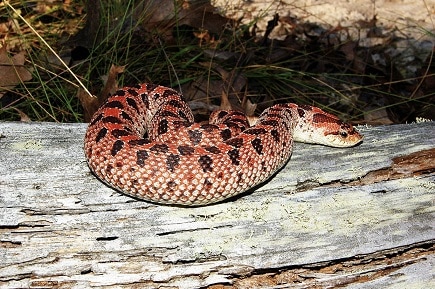
By some estimates, the common garter snake numbers over 1 million in the wild. The southern hognose snake is far from teetering over the brink of demise, but has less than 10,000 left in the wild. This is an eastern snake, its westernmost border in Mississippi, and its heartland in Florida and Georgia. It’s non-venomous with beige and black colours, with glassy eyes that look like they’ve been sown on. At 45-55cm, it’s the smallest hognose snake of all.
The problem is not just the low numbers, but that no subpopulation contains more than 1000, meaning that each is under unique pressure. Their numbers continue to decline sharply and unlike the Louisiana pinesnake, there’s no one reason. The loss of longleaf pine is to blame, but so are reckless drivers, as southern hognose snakes are particularly attracted to the warmth of roads.
One study found that out of 764 sightings in North Carolina, 643 were dead ones on the road. Invasive fire ants are also believed to wage war on this snake. Southern hognose snakes have now been declared extirpated in Alabama, but the glimmer of hope is that they’re naturally secretive and could be avoiding scientists’ gaze.
| 9 | Short-tailed snake |
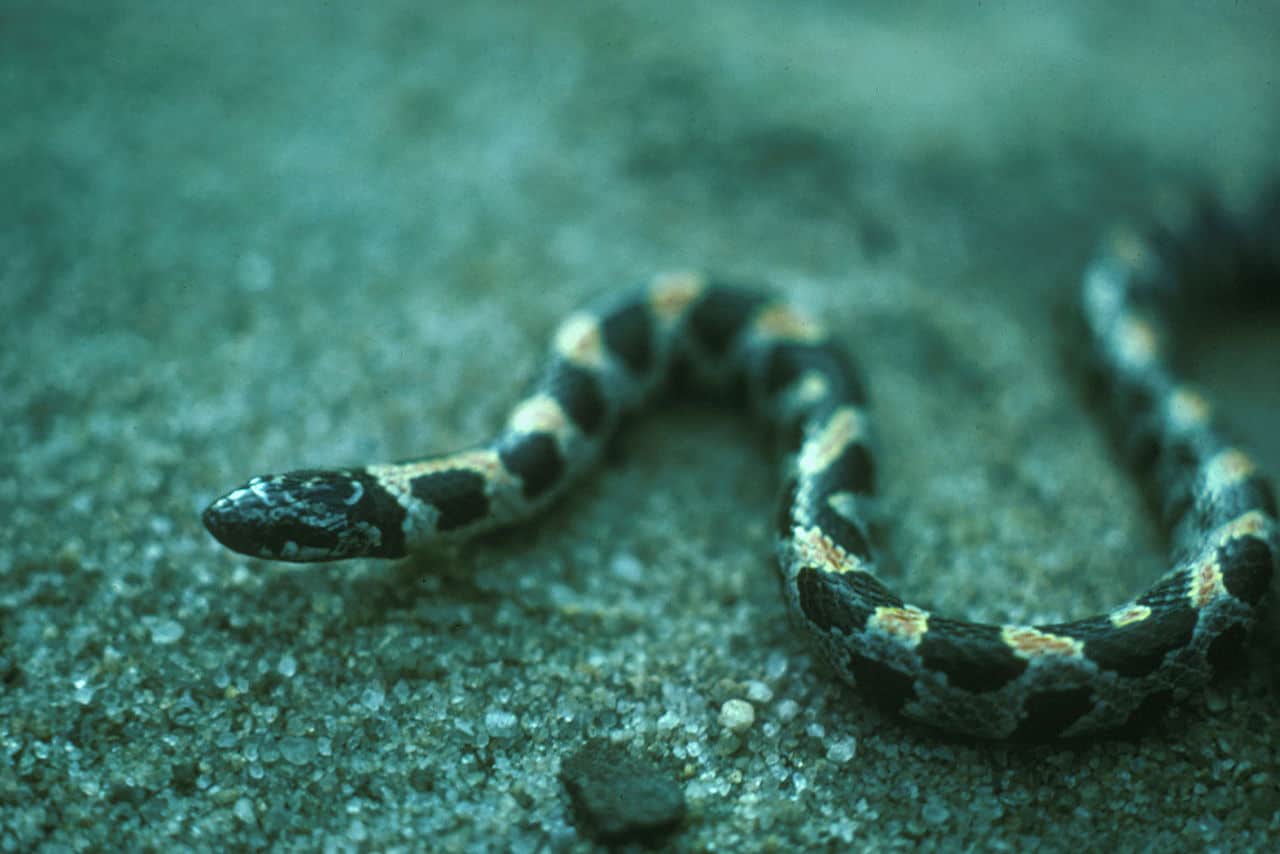
Another rare snake only found in Florida, but this time in the central counties. Short-tailed snakes are small burrowers measuring 36-51cm (record 64.5cm), which probably wouldn’t be seen much even if they ruled the whole world.
It’s a familiar story: Lampropeltis extenuata has evolved over millions of years to be a habitat specialist, focussing on turkey oak woods, and also oak hammocks and sand pine scrub. Those forests are retreating in the face of development, and the snake is too inflexible to move to backups like cow fields or swamps. Short-tailed snakes are listed as threatened, and protected by state law in Florida.
The origins of short-tailed snakes are believed to lie in “Florida island”, where sea levels rose in the Miocene millions of years ago and cut the wildlife off, allowing them to evolve in new directions from their kingsnake ancestors. The short-tailed snake’s diet consists of even smaller snakes, including Florida crowned snakes, a relative of our first entry. It can act viciously when picked up, hissing and biting.
| 10 | Kirtland’s snake |
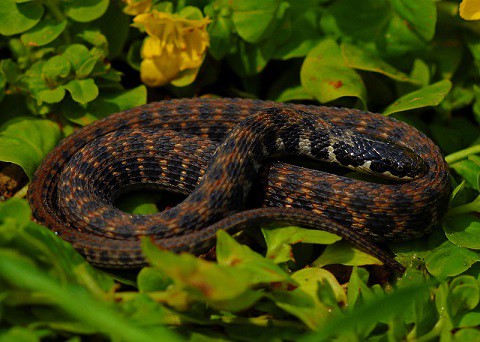
Another victim of habitat destruction, but grassy wetlands rather than the tropical forests of Louisiana. Kirtland’s snake mostly inhabits Ohio and Illinois, spilling into neighbouring states. In 1980 it was known from 100 counties in 8 states, but since then has only been spotted in 25%.
Kirtland’s snakes are fairly inflexible – they pop up in vacant lots in towns sometimes (lurking under cardboard), but mostly cling to riverside wetlands, always with a water source nearby. Herbicides are a problem, as Kirtland’s snakes can barely tolerate a single ounce. In a classic example of nature’ complexity, agricultural chemical runoff hurts the local worms and slugs, removing the Kirtland’s snake’s main foodstuff and spiralling into catastrophe. Studies show that Kirtland’s snakes disappear completely from areas with moderate herbicide application. They’re also a cosy snake that sticks to a home base, rarely migrating – this cosiness is keeping them from reconquering old spots.
Despite this, Kirtland’s snakes are still abundant in certain spots in Ohio. But forget seeing them, as this snake lives in riverside crayfish burrows, only straying out on its own clock.
